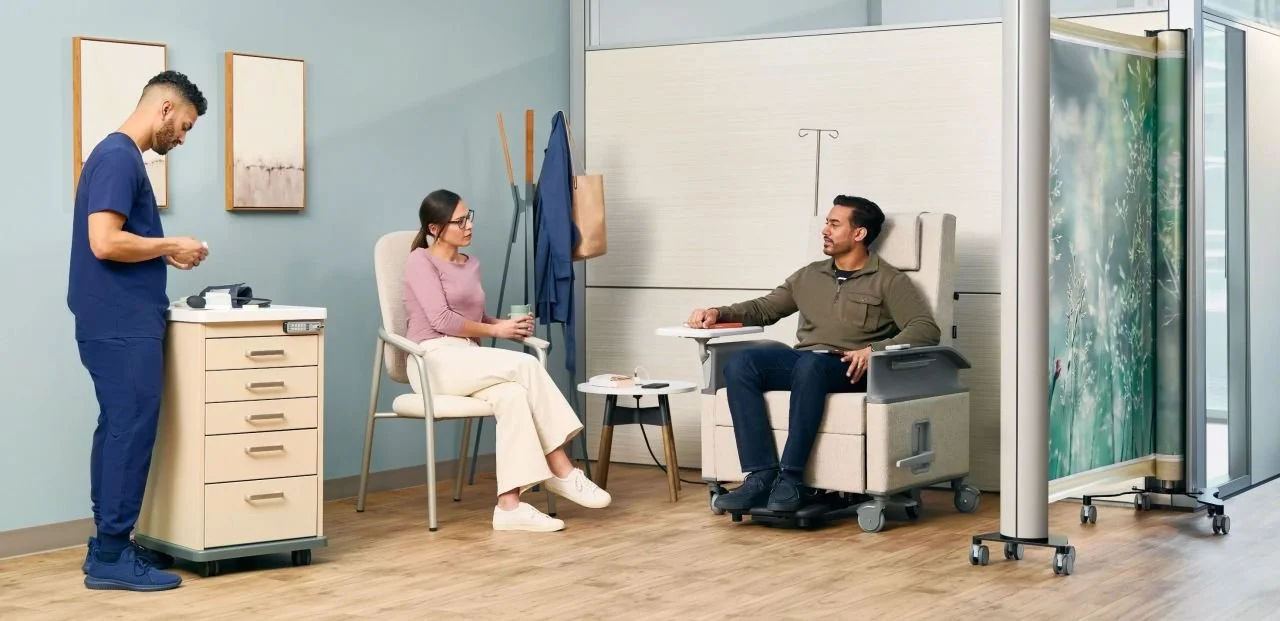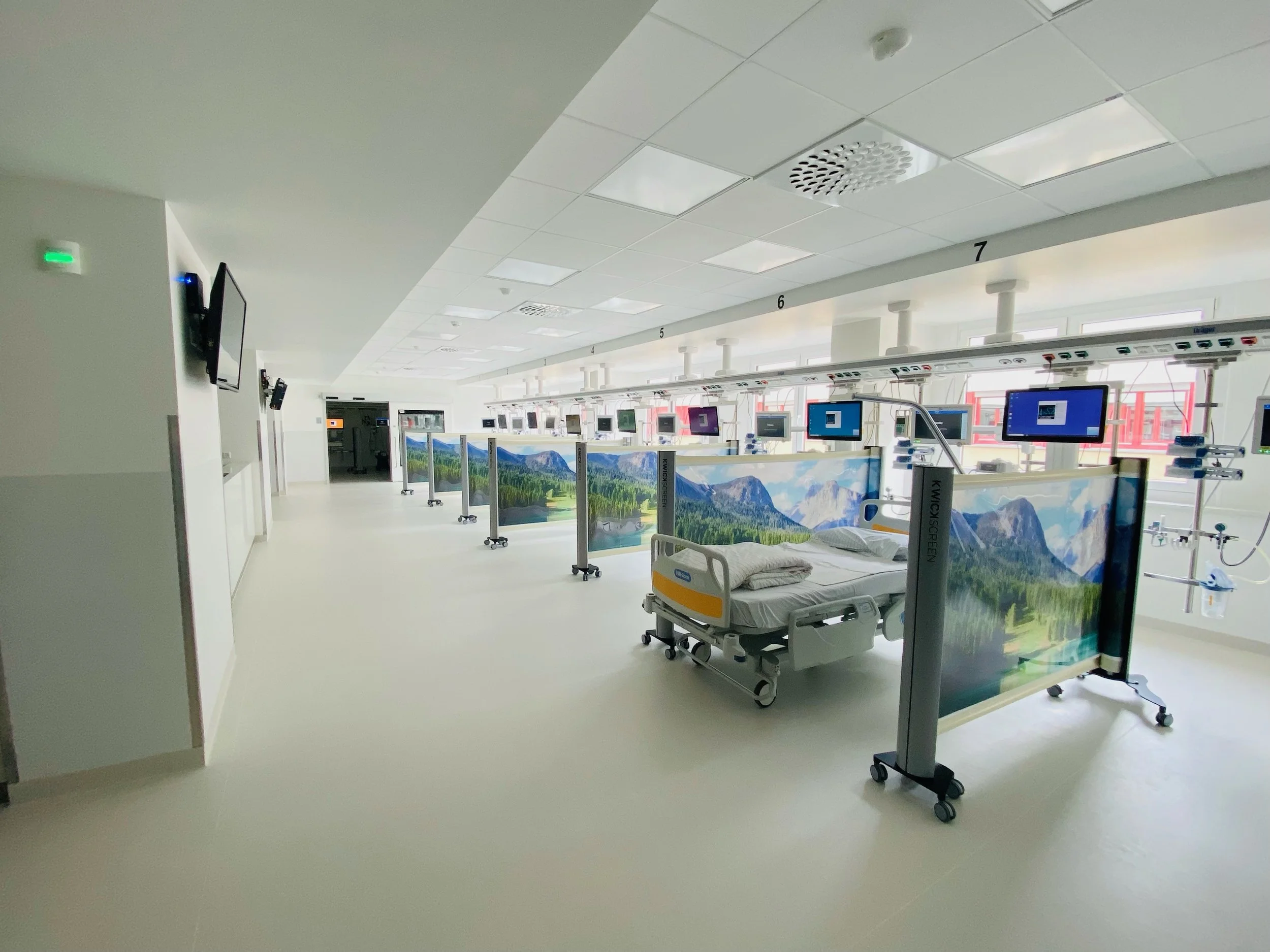Winter Pressures on US Hospitals: Design Solutions for Fluctuating Patient Demand
As winter sets in, hospitals across the United States brace for a seasonal influx of patients. Respiratory illnesses like influenza, COVID-19, and RSV (respiratory syncytial virus) continue to lead the surge, with seasonal influenza and RSV activity resulting in emergency departments seeing an increase in visits according to the Centers for Disease Control and Prevention (CDC). In addition, cold weather-related conditions, such as hypothermia and cardiovascular events, add further strain.
To manage these pressures, hospitals must evolve beyond static designs and rigid workflows, embracing flexibility and adaptability. This article highlights actionable strategies to tackle these challenges, focusing on flexible infrastructure, temporary capacity solutions, and technology integration. It also explores innovative tools and broader design principles to make hospitals more resilient during peak demand.
The Need for Flexibility
Modern hospitals must prioritise designs that can accommodate surges in patient volume without compromising care quality. The traditional model of fixed-bed allocations, static departmental layouts, and unyielding workflows no longer meets dynamic seasonal demands. Fixed features such as built-in cabinetry or ceiling-mounted curtain tracks can significantly restrict the flexibility needed to adapt healthcare spaces to evolving needs. Flexibility can be achieved through:
Modular and Reconfigurable Spaces
Mobile walls and screens, like KwickScreens, offer the flexibility to expand, reduce, or divide spaces as needed. For example, an outpatient clinic can quickly transform into additional treatment bays during surges, ensuring hospitals adapt to changing demands.
Multipurpose room designs, which allow single-patient rooms to easily convert into shared spaces with essential utilities, further enhance a hospital’s ability to scale capacity during peak times. KwickScreens provide a practical, efficient solution for creating flexible, dynamic spaces that are not restricted by curtain tracks.
Mobile Equipment and Multi-Purpose Spaces
Deploying mobile medical units like ventilators, imaging equipment, and dialysis machines enables care to be brought to unconventional spaces. Spaces such as cafeterias or conference rooms can be temporarily repurposed into treatment zones or triage areas.
Key Solutions for Adapting During Surges
Enhancing Emergency Departments (EDs)
Overcrowding in EDs is a perennial winter problem. When hospital beds are fully occupied, patients can unfortunately receive care in hallways—a practice that can compromise privacy and infection control. By using mobile screens like the KwickScreen PRO, hospitals can create temporary bays in open-plan EDs, optimising the use of available space while maintaining patient privacy.
Optimising Waiting Areas
Technology-driven triage: AI-assisted triage systems can be implemented to quickly classify patient severity, directing low-acuity cases to virtual care or observation areas.
Interactive kiosks can direct patients to the right departments efficiently, without crowding reception desks. These systems can adapt to changing conditions, highlighting temporary treatment zones or overflow areas.
Leveraging technology for virtual care
Another way to cope with winter pressures on hospitals is to treat more people at home. With ongoing advancements in technology, a shift toward delivering care in the home is expected to grow by 22%, according to the American Hospital Association. However, this raises concerns for communities lacking access to digital tools.
To mitigate these challenges, project teams can incorporate more telehealth spaces within clinics, enabling patients to connect with doctors remotely. Additionally, designing infrastructure with flexible layouts ensures that future equipment can be integrated as technology evolves.
How Design Can Enhance Infection Control
Infection control is a significant concern during surges, particularly for respiratory illnesses. Design features that support better control include:
Easy-to-clean surfaces:
Incorporating easy-to-clean, non-porous surfaces throughout the hospital helps reduce the spread of harmful bacteria. Unlike traditional hospital curtains, which are made from porous materials that harbour bacteria and contribute to the spread of HAIs, KwickScreens are non-porous. This design allows for easy on-site cleaning between patients, eliminating the need for off-site laundering or disposal.
Hand hygiene:
According to the World Health Organisation (WHO), there is strong evidence that a large proportion of HAIs could be prevented with the correct infection prevention and control (IPC) measures and basic hand hygiene services. Maintaining proper hand hygiene is essential for infection control and reducing the risk of contamination. The design of healthcare facilities should reflect this. The installation of dedicated handwashing stations should be prioritised in patient rooms, wards, and clinical spaces whenever possible. Clear visual cues should be used to promote routine handwashing and encourage behavioural patterns that adhere to best practices. These stations should be equipped with features such as long-arm taps that can be operated with elbows, making it easier to follow recommended hygiene protocols.
Mobile and modular clinics:
Deploying mobile health units to local communities helps reduce hospital demand for minor cases and prevents the spread of hospital-acquired infections (HAIs). The KwickScreen Duo has been successfully used to transform non-clinical spaces, such as exhibition halls and stadiums, into treatment areas outside the hospital. Its L-shaped design is ideal for creating pop-up vaccination clinics or blood infusion stations, offering flexibility in various settings.
Winter pressures are an enduring challenge for healthcare facilities globally, demanding creative, adaptable solutions in both design and operations. This holistic approach—centred on modularity, infection control, and patient-centric design—ensures hospitals are not only prepared for winter but are resilient enough to meet fluctuating demands year-round.
Sources:
https://www.cdc.gov/respiratory-viruses/data/index.html - Centers for Disease Control and Prevention
https://health-spaces.com/blog/2023/11/09/nhs-winter-resilience-plans/ - Health Spaces
https://healthcaredesignmagazine.com/trends/perspectives/proactively-designing-for-shifts-in-the-healthcare-industry/ - Healthcare Design Magazine
https://www.aha.org/aha-center-health-innovation-market-scan/2024-07-02-4-takeaways-coming-shift-health-services-demand - American Hospital Association
https://www.who.int/publications/i/item/9789240103986 - The World Health Organisation


